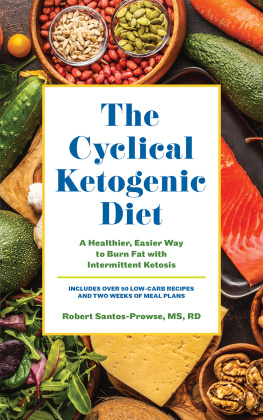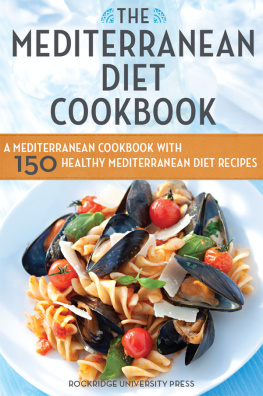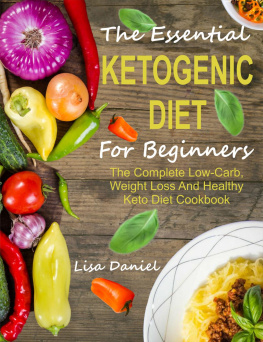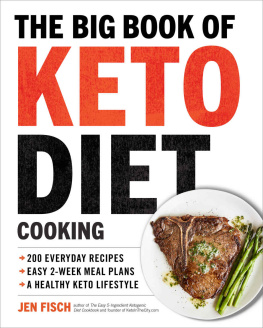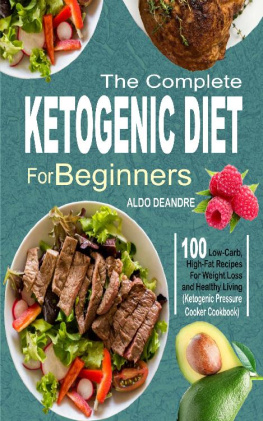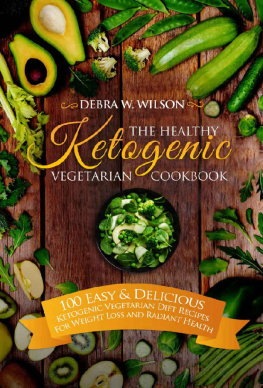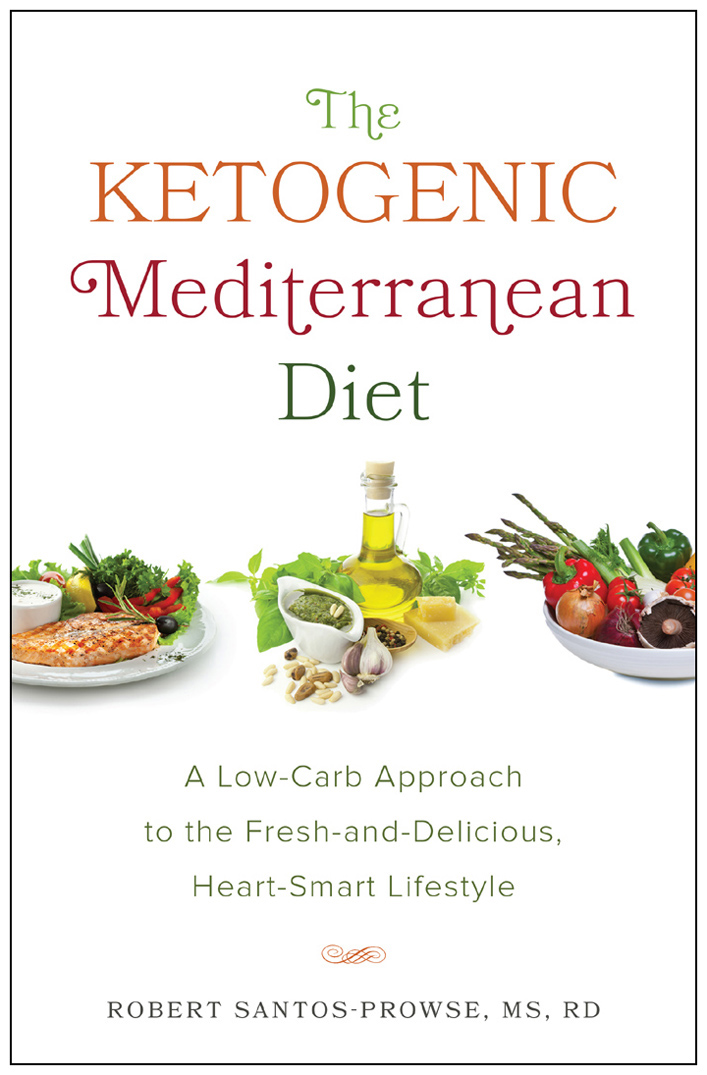
Text copyright 2017 Robert Santos-Prowse. Concept and design copyright 2017 Ulysses Press and its licensors. All rights reserved. Any unauthorized duplication in whole or in part or dissemination of this edition by any means (including but not limited to photocopying, electronic devices, digital versions, and the Internet) will be prosecuted to the fullest extent of the law.
Published in the United States by:
Ulysses Press
P.O. Box 3440
Berkeley, CA 94703
www.ulyssespress.com
ISBN13: 978-1-61243-657-9
Acquisitions editor: Bridget Thoreson
Managing editor: Claire Chun
Editor: Shayna Keyles
Proofreader: Renee Rutledge
Index: Sayre Van Young
Front cover design: Rebecca Lown
Cover images: salmon svry/shutterstock.com, olie oil Taiga/shutterstock.com, vegetables RTimages/shutterstock.com
Interior design: what!design @ whatweb.com
Production: Jake Flaherty
NOTE TO READERS: This book has been written and published strictly for informational and educational purposes only. It is not intended to serve as medical advice or to be any form of medical treatment. You should always consult your physician before altering or changing any aspect of your medical treatment and/or undertaking a diet regimen, including the guidelines as described in this book. Do not stop or change any prescription medications without the guidance and advice of your physician. Any use of the information in this book is made on the readers good judgment after consulting with his or her physician and is the readers sole responsibility. This book is not intended to diagnose or treat any medical condition and is not a substitute for a physician. This book is independently authored and published and no sponsorship or endorsement of this book by, and no affiliation with, any trademarked brands or other products mentioned within is claimed or suggested. All trademarks that appear in ingredient lists and elsewhere in this book belong to their respective owners and are used here for informational purposes only. The authors and publishers encourage readers to patronize the quality brands mentioned in this book.
To my daughter, Lyra.
May your world be one of never ending wonder.
Table of Contents
Guide
Contents

I have not always been a nutrition-conscious individual. In fact, in my younger years I was a poster child for how not to eat. I grew up in Tennessee in the 80s and 90s, during which time obesity rates increased both at home and throughout the rest of the country. My own growth matched the countrywide climb of obesity very neatly. I gained more and more every year, topping out at 280 pounds by my senior year of high school. I have no memories of ever being at a healthy weight as a child. I remember that every time I went for a check-up with my family doctor, he would tell me and my mother that I needed to do something about this, gesturing to his invisible pot belly.
Body mass index (BMI) is a measure of an individuals height relative to weight, and it is often used as a comparative tool to determine where a persons health fits in with the rest of the population. BMI is judged on a standard spectrum that ranges from underweight to obesity class III. The Centers for Disease Control (CDC) recommends comparing your childs BMI to other children of the same age and height by plotting the childs height and weight on a tabulated chart. From the results, you can place the child within a percentile of growth. My height at that age was fine: I was in the 75th percentile. My weight, however, was literally off the chart. The chart places 210-pound 17-year-olds in the 97th percentile and stops measuring at 230 pounds.
During this time, it was not uncommon for me to drink a six-pack of Dr. Enuf every couple of days or eat an entire pound of Twizzlers in a single sitting. I cannot recall what I knew about nutrition or food at the time, other than that being so overweight did not make high school easy. I do remember that I had a vague idea that my weight was my fault and that I should do something about it, as the doctor would say.
Occasionally I would decide to get healthy, which usually manifested in one of two ways: First, I would starve myself by eating only fresh fruits or salads for as long as I could stand it, which was usually about three days, seeing as I was a teenage boy and all. Alternately, I would try to follow an extreme diet of some sort. I never had great success with any of them because either they were ridiculous, I did not follow them properly, or both.
By the time I was in college and getting my first undergraduate degree, I had managed to lose about 20 pounds by working full time and being a full-time student. I simply had less time to be sedentary. Also, when you have to buy your own food, candy becomes a little bit less of a priority. Even though I was no longer eating my weight in Twizzlers, my diet had not gotten much better. I was still pretty much in the dark about food; after all, my first undergraduate degree was in communications, not nutrition. My diet at this time consisted mainly of Easy Mac with the occasional can of tuna fish dumped into the convenient little plastic cup that is used to serve and prepare Easy Mac. Tired and perpetually hungry, I found it very difficult to resist the comfort of highly processed carbohydrates. I do not think that Kraft intended for Easy Mac to make up the majority of a persons diet, and I sure felt like crap.
It was not until a few years later when I had returned to school to study nutrition that I started to get serious about the science of eating well. I had been working in the print industry but after the strong downturn of 2009 I found myself unemployed. Six months of having my rsum rejected prompted me to go back to school and switch careers. I decided to go into nutrition because, after years of struggling with my weight and watching others do the same, this was a career that would help me finally understand how food really affects the human body. If I could learn how to control my own weight, I was certain that I would be able to help others take back control, as well. In just under five years, I earned a second bachelors degreethis one in human nutritionand a masters degree in clinical nutrition. Shortly after that I became a registered dietitian.
Throughout my nutrition education, I experimented with a few dietary and lifestyle patterns and gradually lost another 50 pounds. I was vegetarian for a couple of years and vegan for a while. During my time as a vegan, I also got really into cycling. Yeah, I was that guy. My wife and I even tried eating only raw foods for about a week. I was no longer looking to quickly lose weight like when I tried the crash diets in high school; I was more curious about how diet would affect a persons day-to-day experience.
Throughout all of these experiments, I was exercising and trying to eat more sensibly than I had in the past. I wanted to reach a healthy weight, partially since as a dietitian I would be viewed as a nutrition expert, but I was also interested in having the firsthand experience in the things my future clients would be experiencing. I tried the consistent carbohydrate diet recommended for diabetics, I did a three-day juice fast, and I followed the post-gastrointestinal surgery recommendations that exclude raw or fibrous foods.


